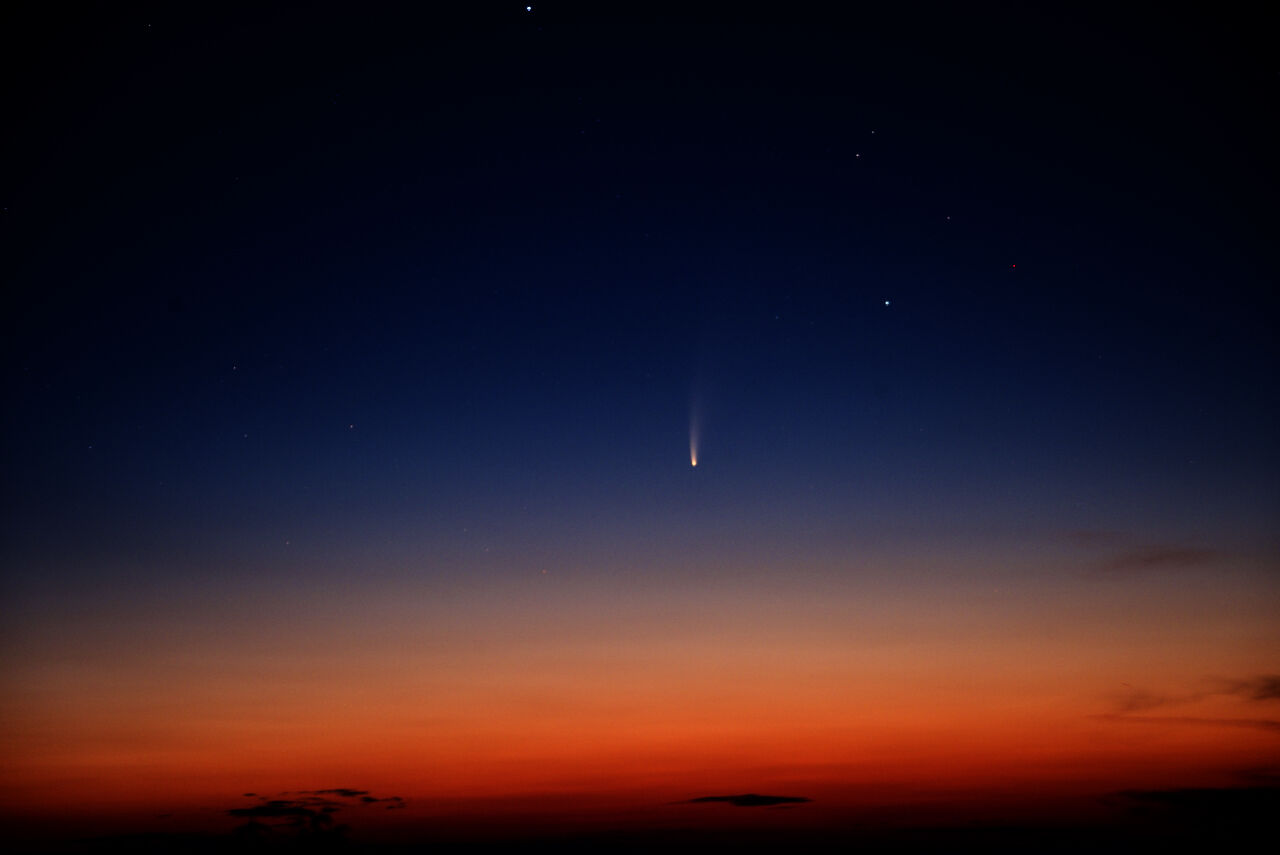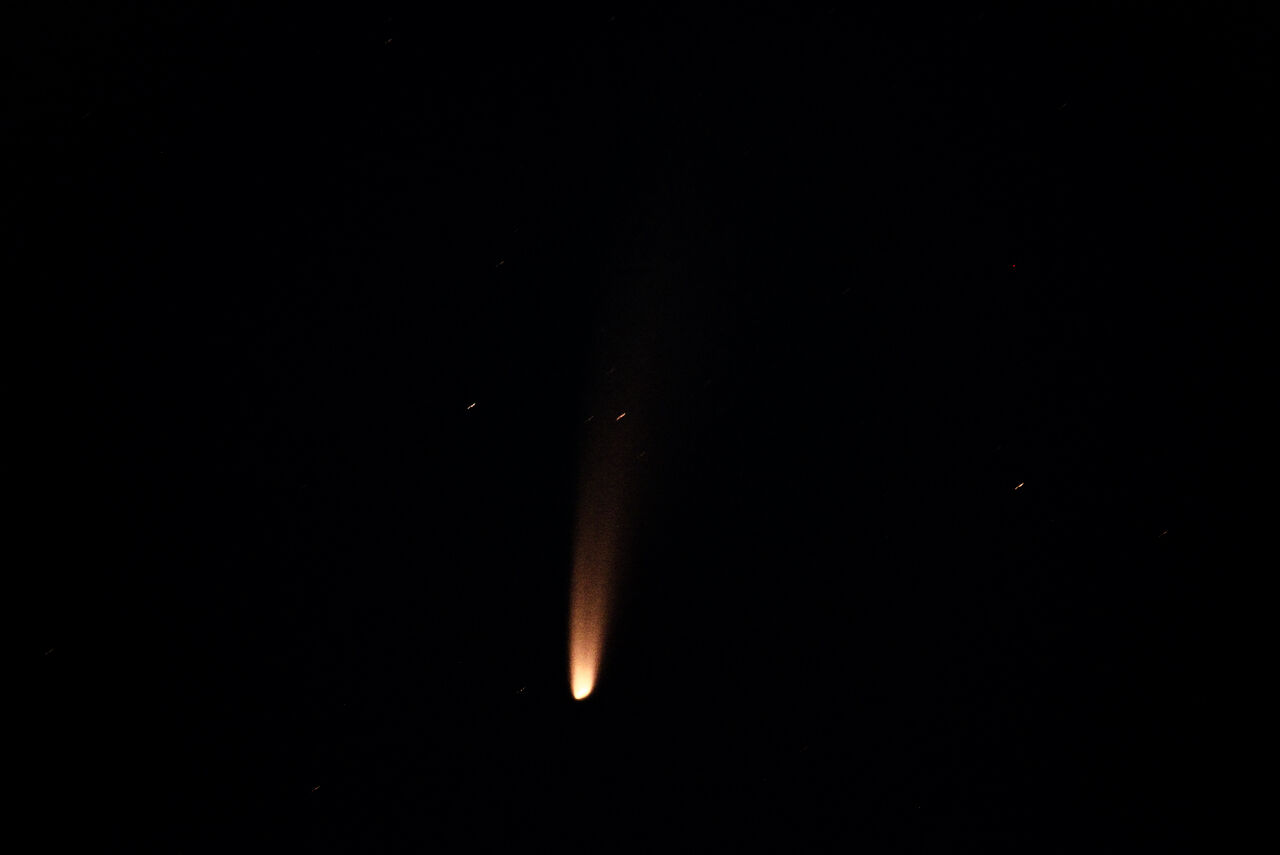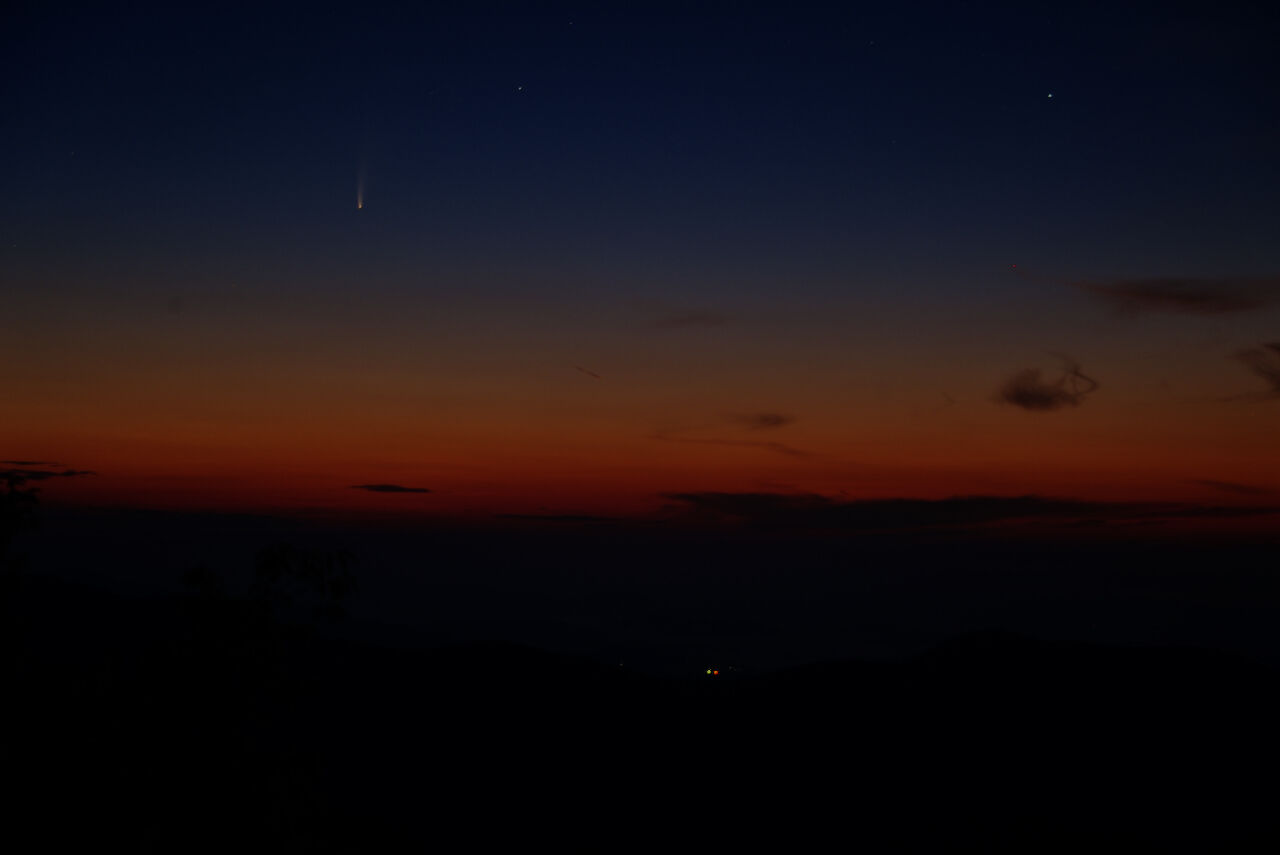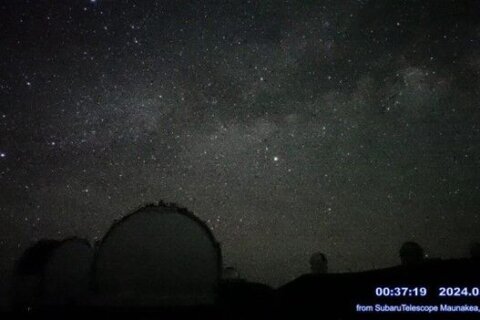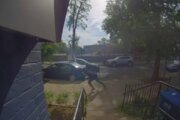Comets are left over debris from the formation of the solar system, and they are on the prowl at any given time.
It has been 23 years since the northern hemisphere had a great comet — one that is bright and spectacular to see. The last was Comet Hale-Bopp, which was visible for 18 months beginning in 1997.
Another spectacular comet had just graced Earth’s skies the year before and was the last comet I had imaged at Shenandoah — using color slide film no less! It had a very long tail, and I watched it move across the star-studded sky as minutes passed.
As I did so, I could understand why humans in the past have associated comets with evil and doom. Even during Hale-Bopp, a cult group in San Diego committed mass suicide in order to join the “mother ship” they thought was flying inside the tail of the comet.
For the D.C. region, NEOWISE rises above the northeastern horizon in the predawn sky at about 4 a.m.
If you have a clear view of the horizon without bright lights, trees or structures, you might be able to see the tail rising above the horizon. The bright, starlike nucleus will follow shortly thereafter.
Look at the provided star charts to find brilliant Venus, then to the left (north), find bright Capella — it is the brightest star in that area of the sky, which helps. From Capella, look at a slight downward angle to the left toward the horizon. You should see NEOWISE, though binoculars will really help in your search.
The comet will enter the skies at dusk mid-month and should become far easier to see. Though, only time will tell as comets are just like cats — who knows what they will do.
If you want to try to photograph the comet, you will need to take an exposure of several seconds, which means bracing yourself against something or using a tripod. Take several pictures and adjust camera settings as you go until you have an image that fits the bill.
Follow my daily blog to keep up with the latest news in astronomy and space exploration. You can email me at skyguyinva@gmail.com.

